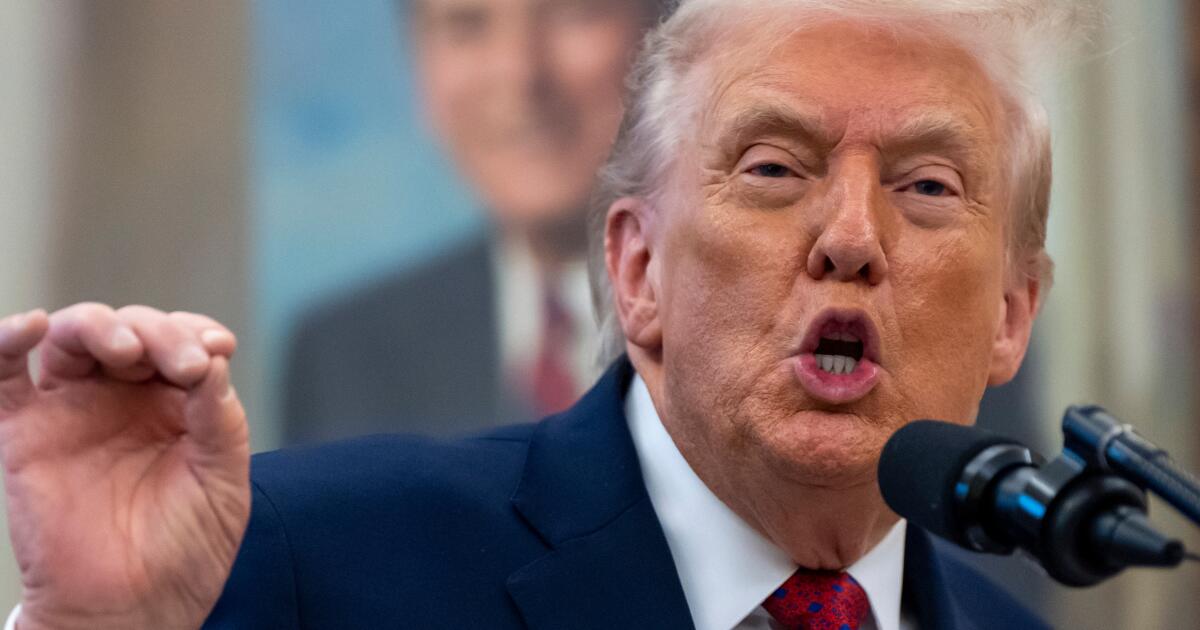Trump is previewing his 2026 agenda in an address to the nation as his popularity wanes
WASHINGTON — President Trump intends to preview his agenda for next year and beyond in a live speech from the White House on Wednesday night. His remarks are coming at a crucial time as he tries to rebuild his steadily eroding popularity.
The White House offered few details about what the Republican president intends to emphasize in the 6 p.m. PST speech. Public polling shows most U.S. adults are frustrated with his handling of the economy as inflation picked up after his tariffs raised prices and hiring slowed.
Trump’s mass deportations of immigrants have also proved unpopular even as he is viewed favorably for halting crossings along the U.S. border with Mexico. The public has generally been nonplussed by his income tax cuts and globe-trotting efforts to end conflicts, attack suspected drug boats near Venezuela and attract investment dollars into the United States.
In 2026, Trump and his party face a referendum on their leadership as the nation heads into the midterm elections that will decide control of the House and the Senate.
Trump has said that he thinks more Americans would back him if they simply heard him describe his track record. Administration officials say investment commitments for new factories will reverse the recent decline in manufacturing jobs and that consumer activity will improve dramatically as people receive increased tax refunds next year.
“It has been a great year for our Country, and THE BEST IS YET TO COME!” Trump said in a Tuesday social media post announcing the speech.
White House press secretary Karoline Leavitt said that Trump would discuss his achievements this year and his plans for the remainder of his second term.
Trump has been omnipresent on social media and television this year with his impromptu news conferences and speeches. But addresses to the nation often can be relatively sober affairs, as was Trump’s June address describing the U.S. bombing of nuclear facilities in Iran.
The president has eschewed the messaging discipline that’s common among most politicians, an authenticity that appeals to some voters and repels others.
In a speech in Pennsylvania last week, he said his tariffs might mean that American children should have fewer dolls and pencils, while confirming a previously denied story from his first term in 2018 that he did not want immigrants from “shithole” countries.
On Monday, Trump on his social media site blamed Rob Reiner’s vocal objections to the president for the killing of the actor-director and his wife, Michele Singer Reiner.
A report released on Tuesday showed a jobs market that looks increasingly fragile, even if the overall economy still appears to be stable.
Employers were adding on average 122,750 jobs a month during the first four months of this year. But since Trump announced his broad tariffs in April, monthly job gains have averaged a paltry 17,000 as the unemployment rate has climbed from 4% in January to 4.6%.
Trump’s team has blamed Democratic lawmakers for shutting down the government for the job losses reported Tuesday during October. The president continues to blame his predecessor, Democrat Joe Biden, for any challenges the nation might face over inflation or ending Russia’s war in Ukraine.
Boak writes for the Associated Press.
